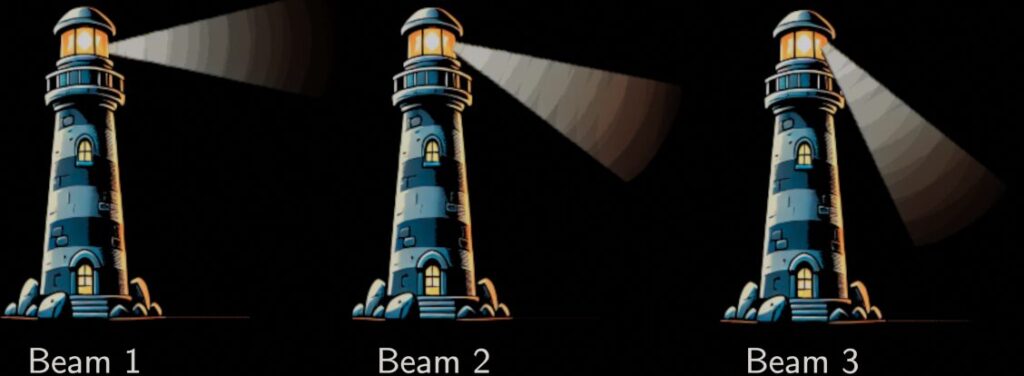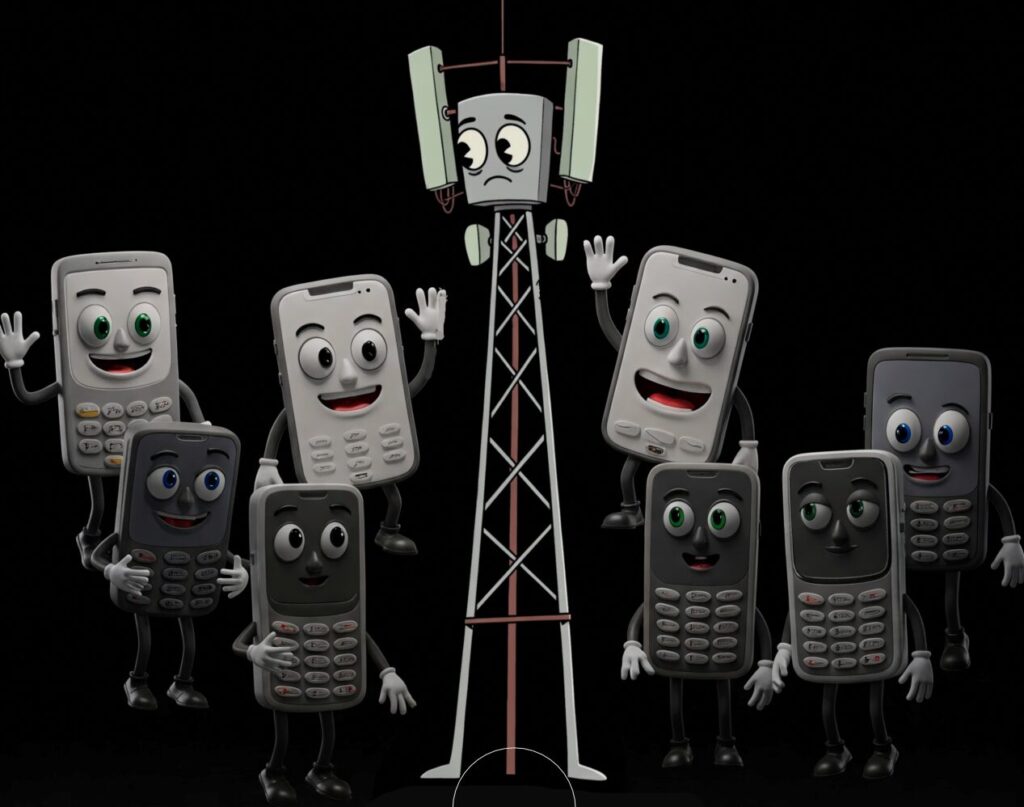Ever watched your phone jump onto a 5G network almost instantly, when you switch ON your phone? It’s actually a clever process called RACH (Random Access Channel) Procedure. Think of it as a super-smart “handshake” between your phone and the nearest 5G tower. Let’s break down this connection process in a fun way using analogies!
Bonus Fact: Good news! RACH works pretty much the same way in 4G as it does in 5G. 😃
Want to dive into details? Watch below video:
What is RACH Procedure?
Imagine a crowded room where everyone wants to talk to the host. If everyone just started talking at once, it would be chaos! The RACH procedure is like a polite way for your phone to get the 5G tower’s attention and request to start communicating. Basically RACH procedure is the very first handshake between your phone and the cell tower before the real communication begins.
🎯 Discovering the 5G Lighthouse Signal

Imagine a 5G tower as a lighthouse with many beams, not just one! Each beam shines in a different direction. Your phone’s mission? Find the strongest, clearest beam for the best connection.
To help you, the tower broadcasts “Hey, I’m here!” signals – these signals are called SSBs (Synchronization Signal Blocks). They’re sent out across all those beams, like the lighthouse flashing its light in every direction.
Your phone scans each beam, listening for those SSB “Hey!” signals until it finds the strongest one. Found it? Beam locked!
👋🏼 Waving “Hello” – Sending a RACH Signal
Once your phone finds the strongest beam, it’s ready to say “hello” back and ask for a connection. It does this by sending a RACH signal. Think of it as waving your hand in a crowd to get the tower’s attention.
This “wave” is actually a special signal called a Zadoff-Chu sequence. There are 64 different “wave patterns” your phone can choose from. It picks one randomly, like choosing a unique way to wave. Why random? Imagine lots of people waving at once – different waves help the tower tell everyone apart! It’s all about avoiding a chaotic “wave collision.”

🎧 Tower Identifies Your Unique “Wave”
Now, the tower has to figure out who just waved and when their wave arrived. Imagine being at a concert, trying to spot your friend waving in a huge crowd. You recognize your friend’s distinctive wave.
The 5G tower does the same! It knows all 64 possible “wave patterns” (Zadoff-Chu sequences). Suppose you waved with Zadoff Chu Sequence-2, then the 5G tower knows that somebody is waving with Sequence-2.

The tower also measures how long your “wave” took to reach it. This tells the tower your distance. Why does distance matter? 5G needs messages to arrive at precise times. To make sure your phone’s signals are perfectly timed, the tower sends a Timing Advance command. It’s like saying, “To the phone who just waved with Sequence-2, I see you! Wave a little earlier next time so I see you clearly and on time!”
⚔️ Avoiding Wave Clashes – Resolving Signal Conflicts
What if two phones accidentally pick the same “wave” at the same time? Uh oh, signal clash! It’s like two people waving with exactly the same Sequence-2, both thinking they’re being greeted. Confusion!
To solve this, each phone picks a random “name tag” and send it to the tower. Think of it as shouting your name after waving.
The tower then looks at both “name tags.” Tower then picks the phone with the stronger signal (usually the closer, clearer one) and gives it a permanent “VIP pass”.
If your phone sees its “name tag” get a “VIP pass” back from the tower, then connection is success! The other phone realises it wasn’t picked and will try “waving” again later.
This clever process is called contention resolution – like the tower sorting out a bit of a wave-conflict!

Let’s recap these waves and handshakes:
- (Message 1): Phone: “Waving hello!”
- (Message 2): Tower: “Hello back, adjust your timing!”
- (Message 3): Phone: “It’s me, [phone’s name tag]!”
- (Message 4): Tower: “Welcome, handshake confirmed for you!”
🚦 VIP Connection – Contention-Free RACH
Sometimes, 5G makes connecting even faster, like giving you a VIP pass to an event where you can completely bypass the registration lines and walk right in! That’s similar to contention-free RACH.
For example, when your phone smoothly switches from one tower to another while you’re moving (handover), the old tower tells your phone exactly when and where to look for the new tower. No need for time synchronisation! Your phone knows exactly when and where to “wave” to the new tower.

This VIP connection is super quick – just two messages instead of the usual four! Just wave and get the acknowledgement from the tower. No random “waving” or waiting needed. Smooth connection guaranteed!
📌 RACH in a Nutshell: Why It’s a Big Deal
- ✔️ Your phone uses RACH to start talking to the 5G tower. It’s the “let’s connect!” handshake.
- ✔️ It’s a beam hunt: Scanning to find the strongest 5G signal beam.
- ✔️ “Waving” with a special signal: Sending a Zadoff-Chu sequence to get attention.
- ✔️ Tower measures distance and timing: Ensuring perfect communication rhythm.
- ✔️ Smart conflict resolution: Handling “wave clashes” with random “name tags.”
- ✔️ VIP fast track for handovers: Contention-free RACH for super-smooth transitions.
Next time your 5G connection is lightning fast, remember all this behind-the-scenes “handshake magic” happening thanks to the RACH procedure! 🚀

Leave a Reply